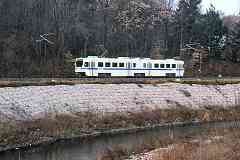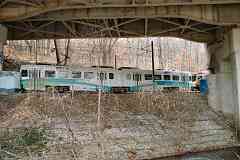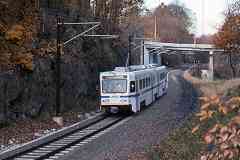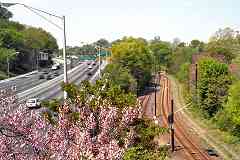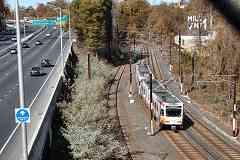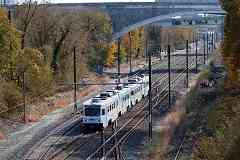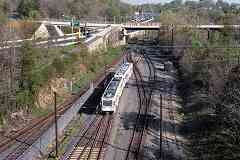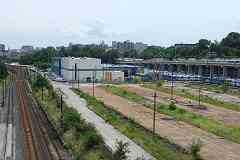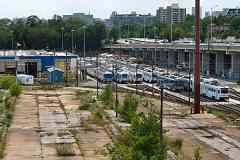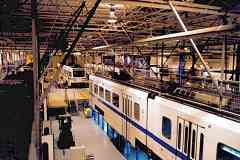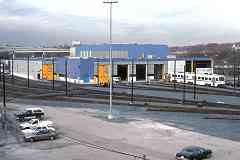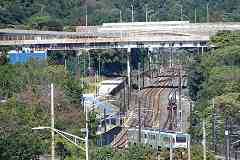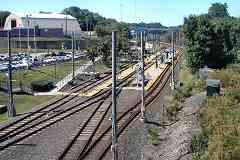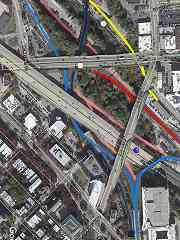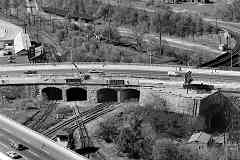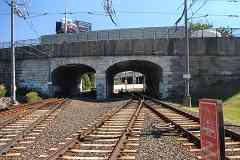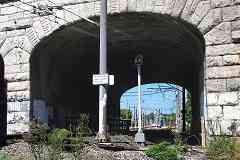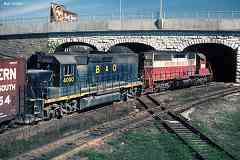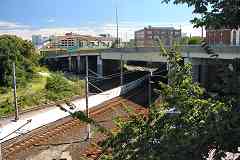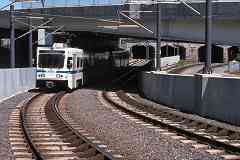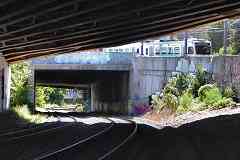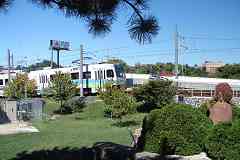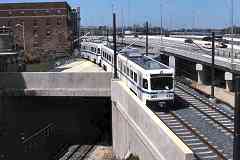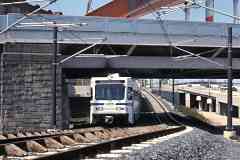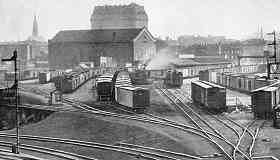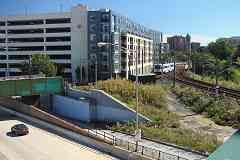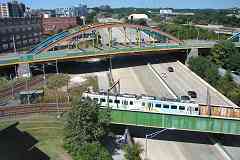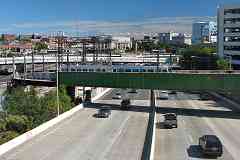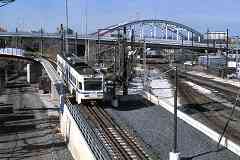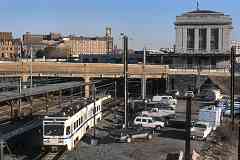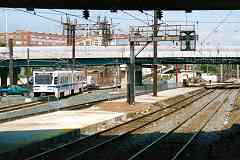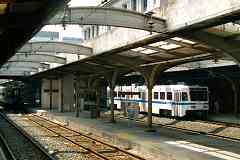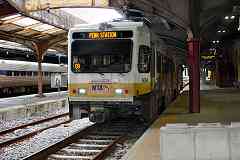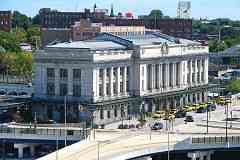|
In this mid-1970s view, the former Northern Central route along the
Jones Falls at upper left is looking a bit shabby. A few years earlier,
stalled remnants of Hurricane Agnes had flooded out bridges north of Baltimore
City, rendering the route useless for through trains. With the corridor
devalued, subsequent owner Conrail became willing to share the route with
light rail.
Snaking through photo middle is the B&O's Baltimore Belt Line, now part of
CSX's Philadelphia Subdivision. The building at lower left is the B&O's NA
tower. At right is a portal of the 1870s B&P Tunnel whose replacement is,
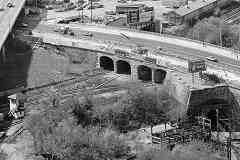 as of this writing, no further than on drawing boards. The building at upper
left, which had been a freight shed of the Maryland & Pennsylvania RR, is
now used by the Baltimore Streetcar Museum.
as of this writing, no further than on drawing boards. The building at upper
left, which had been a freight shed of the Maryland & Pennsylvania RR, is
now used by the Baltimore Streetcar Museum.
North Avenue runs east-west through the middle of the photo. The billboard
adjacent it at left, with Tom Selleck advertising cigarettes, is near where
the next photo was snapped.
Link:
LoC source photo
Change for:
Maryland & Pennsylvania RR tour at this site
| 
